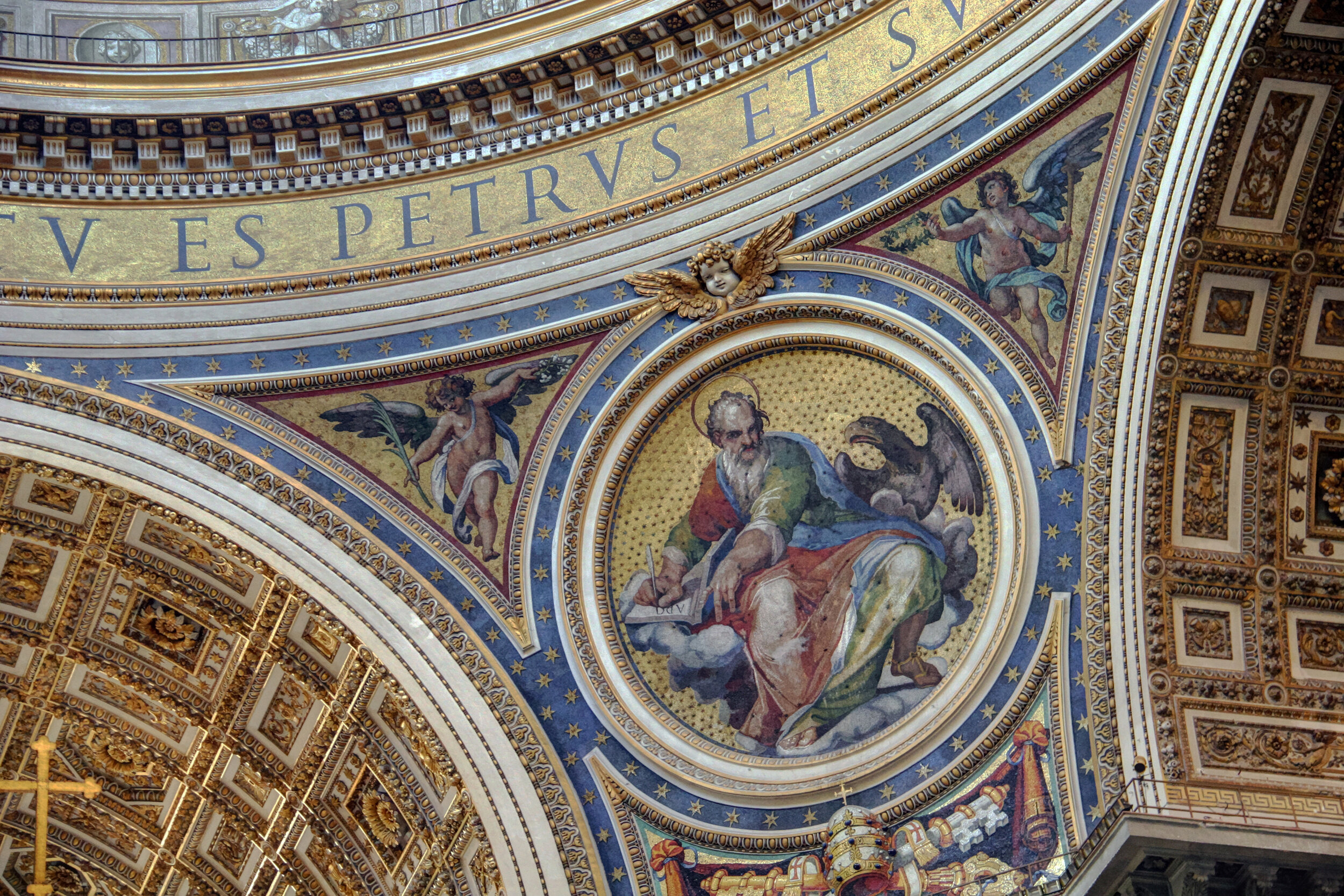
Page 2 of 3
Rome, Italy
I can see god on a big white bed, too much time on his hands, too much stuff in his head
There are four catholic pilgrimage churches in Rome. First is St Peter's at the Vatican, where most of the body of St Peter is buried and the power and glory of the organization is headquartered. Second is the Arch Basilica of St John Lateran, the home church of the pope and the home of the heads (and heads only) of St Peter and St Paul. Third is the Basilica of St Paul's Outside the Walls, where the rest of St Paul is buried and not too far from where he was killed so very long ago. The fourth is the Basilica of St Mary Major which has no heads or saints but claims to have a piece of the (supposed) manger enshrined in it. Good upstanding Catholics for centuries would visit Rome and make sure to hit all four and in this, my third visit to the city in the past fifteen years, I finally decided to try it myself.
Pictured here is one of the four churches. St Paul's Outside the Walls was founded by Emperor Constantine, the guy who switched the empire to Christianity and then moved the whole operation east (where the money was). The basilica was built atop St Paul's headless resting place, it is the second largest church in Rome and (even though its interior has changed over time) it is the closest that you will ever come to being inside a true Roman basilica. In addition to most of St Paul, the basilica also has on display portraits of every single pope from St Peter all the way to St Benedict and (in a bit of a troubling message) there are only room for seven more. After that (if there is an after that) they're just out of luck I guess.
And just to go back a minute, early Christians seemed to really have a problem with burying heads and bodies at the same place. It's almost understandable in St Paul's case (he may have been beheaded when executed by the state), but St Peter is a different story. Tradition says that he was crucified upside down and not beheaded, meaning that after the fact someone must have thought it was a good idea to take his head across town. Makes no sense at all to me.
Even though it might not be one of the four official pilgrimage churches, I made my own unofficial pilgrimage out to Tor Tre Teste to see Richard Meier's Jubilee Church. From my small hotel near Republicca it took a good hour to go only six miles east- first there was a Metro A train to Vittorio Emanuele, then an incredibly slow Rome-Giardinetti trolley out to Viale Alessandrino, followed by a mile long walk through fields and parking lots uphill to Tor Tre Teste and (finally) to the promised land.
The church was originally called "The Church for the Year 2000" and was commissioned by then pope (and future saint) John Paul II, although the year 2000 was a bit optimistic for a church that did not open until 2006. Meier's design is by far his most sculptural, three curved shells dominate the design and make you think (from the outside at least) that it was more than worth all of the trouble it took to get there.
Inside the inner two shells are partially carved out while the rest of the church starts to honestly feel just a bit busy, with more than enough walls and slots and homages to Ronchamp to keep anyone occupied. Still despite all of the busy-ness it is still an interesting and well lit space and a welcome addition to anyone's pilgrimage.
The Vatican operates all four (official) pilgrimage churches but only one of the four is in the Vatican (St Peter's) and only one of the four allows visitors with a few euro to spare the thrill of walking up to its top (St Peter's).
The trip up to the top of the dome isn't easy. There are a lot of steps- around 520- that take you from ground level up to the very top. Luckily there are a few stops along the way. The first stop is the roof of the basilica (pictured in reflections below), where you briefly can head outside and see the back of the pediment's all star apostle lineup and gaze up at the dome itself. The second stop is an all mosaic balcony where you can look both down at the altar and up at the inside of the dome, to see the size and scale up close and personal.
This is what you see from the top of St Peter's Basilica, looking up and over all that Michelangelo and Rome have to offer, all in the shadow of the late afternoon sun.
The weekend that I was in Rome was the weekend that the Archbishop of New York was elevated to the higher position of Cardinal. The real impact wasn't that I felt the need to attend the ceremony (I did not) but that St Peter's and the square were all messed up in preparation for the ceremony. The great space of the central nave of the Basilica was roped off as worker bees (sadly I don't mean actual bees) spent a lot of time setting up row after row of temporary seating. Even the altar area was closed, you could only see it from a distant, narrow, temporary aisle in a space that is normally wide open. The end result of all of these restrictions was that it forced me to look and concentrate on pieces of Michelangelo's building that I might otherwise miss- at the side aisles and ceilings and altars and arches and light, of at all that is and all that always was.

